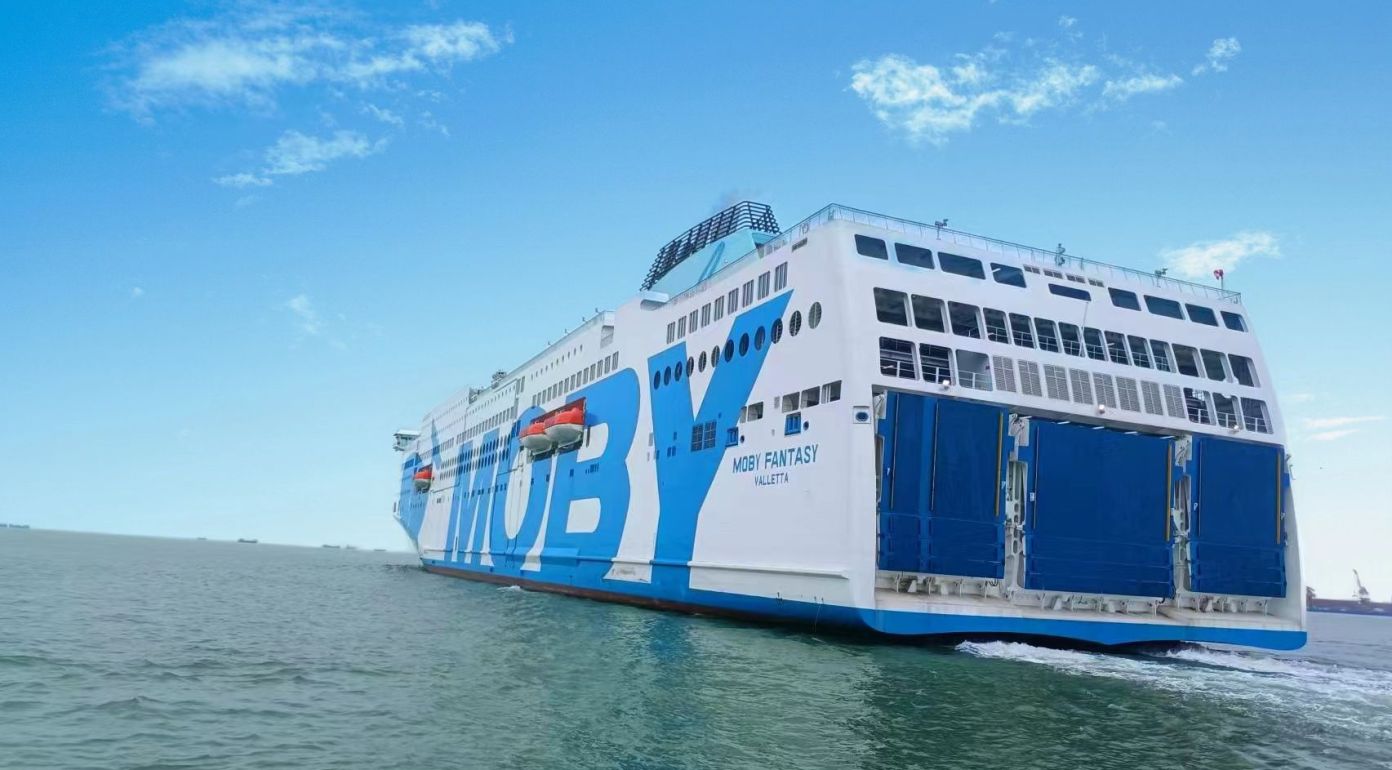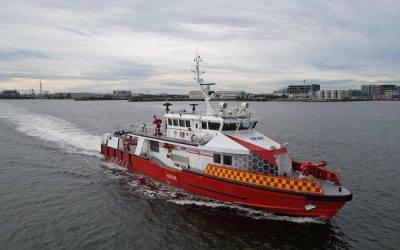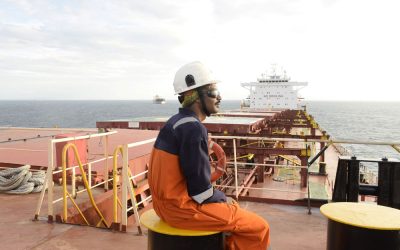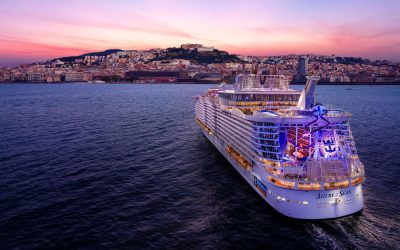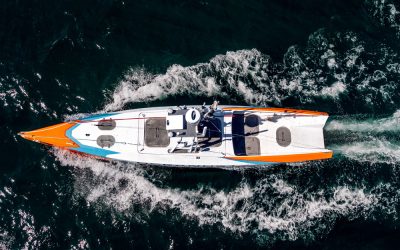This year marks the 30th anniversary of the introduction of the first ferry to become often referred to as a ro-pax – the Majestic of Grandi Navi Veloci. While the ship and its numerous sister ships featured high-quality passenger accommodation, ro-paxes soon became regarded mainly as ferry companies’ response to budget airlines, providing a no-frills experience on board modern ships.
This contrasted sharply with cruise ferries that feature extensive passenger facilities, multiple dining options and high-quality cabins. On ro-paxes, the focus was on transport – of passengers, but of freight in particular: a ro-pax could carry 1,000 passengers and have 2,000lane-metres for freight. On a cruise ferry, the figures would roughly be reversed.
Three decades later, the picture has changed a lot and while these ships still have large freight capacity, many now feature very high-quality passenger accommodation, and some have features such as spas that would normally be expected to be found on high end of the market cruise ferries. Still, the passenger capacity of these ships remains low compared to cruise ferries.
However, ro-paxes are much cheaper to build than cruise ferries: the 68,460gt Finnsirius of Finnlines delivered earlier this year has a price tag of US$135 million, or US$1,972 per gross ton. In comparison, Viking Line’s two-year-old, 65,211gt cruise ferry Viking Glory cost €194 million (US$205 million) or €2,974 (US$3,146) per gross ton. The Viking Line ship has accommodation for 2,800 passengers, all berthed, while the Finnlines vessel has a capacity of 1,100. Both ships operate between Finland and Sweden and were built in China.
An industry source The Naval Architect spoke to pointed out that Chinese yards that build passenger vessels do not have the same infrastructure of suppliers and contractors as European yards that specialise in ferries and cruise ships. Consequently, the Chinese builders may end up making a loss with at least some of their passenger ship contracts.
High-quality facilities needed in competition against airlines
“If ferry companies want to successfully compete with the airlines, the only way they can do this is to offer a type of transport that is actually part of the holiday,” according to Finn Wollesen, managing director of the Danish consultant naval architect firm Knud E. Hansen. This echoes a slogan of Cunard Line from the 1950s – ‘Getting there is half the fun’ – and it resonates with today’s travel market as well: Wollesen says several ferry company executives have made the same point in his conversations with them.
In practice, this means that ferries need to offer good quality facilities, such as bars and a choice of restaurants, but also amenities like a gym and a spa, various kinds of entertainment, plus activities. As passengers also work while aboard, it is essential that there is a right environment on board to cater for this as well. Access to the internet is a must for those who work while on board, but it is also an important feature for passengers from other segments of the market.
On longer crossings, good quality cabins are an important element of the package. However, as ferry trips mostly only take one or two nights, cabins on these vessels do not need to be as large and luxurious as on cruise ships. While on the latter ship type people often spend quite a lot of time in their cabin, which has evolved into much more than just a place to sleep, on board ferries most passengers prefer to use the public rooms for lounging rather than their cabin.
Private facilities in cabins have been part of the demand list of ferry passengers for many years and these are also provided. However, on some routes some passengers prefer to spend the night in an aircraft-type seat. Access to the internet and charging points for electronic devices should be available in the reclining seat areas as well.
Wollesen says that in his opinion there could be exciting prospects for reviving overnight ferry services in e.g. the North Sea, where many of them were gradually closed after the disappearance of duty free sales in intra-EU trades in 1997. Ageing fleets also contributed to the demise of many of these services. “Many people fly from Denmark to Amsterdam – it only takes about one hour – and then take the DFDS ferry to Newcastle. There they go to watch football, enjoy the night life, or do shopping, before taking the ferry back and then flying home,” he tells The Naval Architect.
Scalability needed to adapt for seasonality of demand
Anders Orgaard, chief commercial officer at OSK Ship Tech, also in Denmark, agrees. Although there are differences between e.g. the Mediterranean and the Baltic markets in terms of details, ferries must provide good-quality experience and facilities to their passengers, he notes. “Food and the cabin are the main elements of this and there is growing attention to cost-efficient operations as well,” he tells The Naval Architect.
Scalability of the operations is gathering attention from ferry companies. In practice, this means that it should be possible to shut down some parts of the public areas in shoulder seasons when passenger volumes are low. This reduces operating costs as staffing levels on board can be reduced as a result.
However, this should not happen at the expense of passenger experience – a bar and a restaurant, for example, should be open on board even during low season operations, Orgaard points out. “In the design of ferries, the focus has shifted to the business case as a whole, from focusing just on how to maximise revenue during the peak season,” he says.
Johanna Boijer-Svahnstrom, head of corporate communications at Viking Line in Mariehamn, Finland, says that energy efficiency, flexibility, hybrid fuels and interesting concepts for the passengers are the key factors that would determine what kind of ferries will be used in the Baltic in the late 2020s and early 2030s.
Spa services and well-being in focus
“People have been travelling with our vessels since 1959. They will keep on travelling. Destinations will sell better as well as onboard concepts – spa, well-being, good restaurants, comfortable cabins, interesting shopping,” she tells The Naval Architect.
“Our business model is to combine freight with route passengers, cruise passengers, conference passengers and cars. To optimise all legs is important for us. The groups may vary depending on week days,” Boijer-Svahnstrom says, adding that passengers from outside the northern European region are a growing part of Viking Line’s business. Many of these use the company’s ships to visit Helsinki, Tallinn and Stockholm.
Viking Glory has more focus on spa and well-being than its running mate, the 2013-built Viking Grace: its design is focused more on entertainment on board. The Finnlines ro-paxes also have extensive spa areas on board.
Cost of green technology to affect quality of facilities on future ships
Tallink’s chief captain and head of ship management, Captain Tarvi-Carlos Tuulik, says that most probably existing ferries will continue in the traffic with small modifications and mostly already existing fuels until early 2030s, after which the industry could expect new carbon-free technologies to have been tested and declared safe for use on board passenger ships.
The Estonian company operates both cruise ferries and ro-pax vessels on its services in the northern Baltic. As far as the future is concerned, Tuulik thinks technology will largely dictate what kinds of ships will be used.
“If it’s the case that the green energy technology is massive and expensive, there will probably be a need for smaller and lighter vessels with less comfort. However, if the green technology is smart and light, the current well-accepted standards can be preserved for passengers on board the next generation of the Baltic Sea cruise ferries,” he says.
Both freight and passengers will remain important at least for the foreseeable future as ferries remain one of the most sustainable modes of transport for moving cargo and passengers at the same time. Asked if cruise ferries would be viable from the newbuilding cost point of view in the future, Tuulik says: “Only time will tell, but we very much hope that the cruise ferries will also remain on the Baltic Sea.”
It would seem that from a passenger point of view, convergence is taking place between cruise ferries and ro-paxes. Instead of being rather basic vessels with just a transport function in mind, ro-pax facilities are becoming more varied and also very well designed. The numerous E-Flexer type ro-paxes that Stena is building in China for its own use and for long-term charter to third parties and the 69,500gt Moby Fantasy which has recently entered service in the Mediterranean are good examples of this development.
